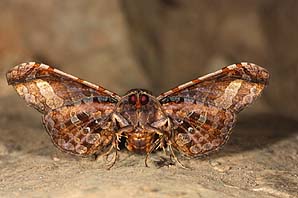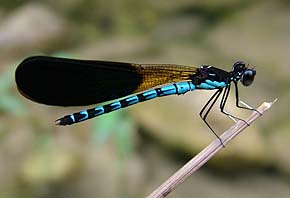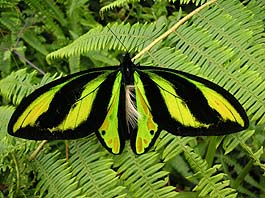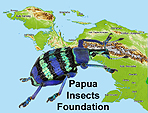.png)



.png)



![]() thumbnail
galleries
thumbnail
galleries ![]() SUGAPA digital
SUGAPA digital
Papua-Insects.nl
The
Papua Insects Foundation
Papua Entomology Survey 2023 – a unique expedition!
A group of 19 scientists and experts from seven countries departed on the 10th of September to Papua, Indonesia. The expedition will be held from 12th September until 7th October. Main destination is Yapen Island, hardly visited yet by scientists. The aim is to explore the insect life of the island and to support the UNCEN Biology Faculty in Waena, Papua. It is important to make students aware of the value of the former Henk van Mastrigt collection (now Koleksi Serangga Papua, KSP) and nature preservation. New species will be found, better insight into the natural historic situation on Yapen will be obtained. The knowledge will contribute to the preservation of the extraordinary biodiversity of Papua Indonesia.
Who is there
Rob de Vos - Lepidoptera (moths, especially Erebidae, Arctiinae - tigermoths), initiator of the survey
Peter Jan de Vries - Lepidoptera and Trichoptera (butterflies and moths, and caddisflies)
Luc Willemse - Orthoptera (crickets and grasshoppers)
Josef Tumbrinck - Orthoptera (crickets and grasshoppers)
Tony Robillard - Orthoptera (crickets and grasshoppers)
Pasquale Cilliberti - Diptera (mosquitos and flies)
Siep Sinnema - Lepidoptera (moths, Uraniidae, Eupterotidae – sunset moths and wooly emperor moths)
Jannie Sinnema - Lepidoptera (moths, Uraniidae, Eupterotidae – sunset moths and wooly emperor moths)
Camiel Doorenweerd - Diptera (fruit flies)
Daniel Rubinoff - Diptera (fruit flies)
Olivier Pequin - Lepidoptera (butterflies, especially Delias – river whites)
Nicolas Grimaldi* - Lepidoptera (butterflies, especially Delias – river whites)
David Lohman - Lepidoptera (butterflies)
Royce Cumming - Phasmatodea (stick insects)
Monica Guimaraes Cruz - Lepidoptera (caterpillars)
Piet Zumkehr - Lepidoptera (micro-moths)
Tomas Lackner - Coleoptera (beetles)
Inge van Noortwijk - Scientific drawer
Rinske van Noortwijk - Communications*Unfortunately Nicolas Grimaldi had to leave after a week, because of illness
Counterpart University of Cenderawasi (UNCEN)
Daawia Suhartawan - teacher
Icka Ramandey - teacher
Erlani Rahareng - teacher
Heron Yando - student and guide
Gison (Jeff) Morib - student and guide
Schedule
12-18th September - Presentations on the University (UNCEN), fieldwork Cyclops, Genyem, Keerom
19-30th September - Yapen Island, fieldwork
1st-2nd October - selection and registration of collected material, Waena
3rd-5th October - Nimbokrang, forest of the Birds of Paradise
6-7th October - preparing for departure
What do we do?
There is still much unknown in the field of insects, the migration, reproduction, relation to hostplants, etc. The main action in this survey for the scientists and experts is to collect the insects. If a specimen is not recognized directly and should be studied more thoroughly the insect is killed to preserve. After the fieldwork all the insects need to be prepared for transport. Some will be added to the UNCEN collection in Jayapura directly, others will be taken to other collections or taken for lab-work elsewhere, and will be returned later. A survey will be done in collaboration with UNCEN students to get more insights on the relation caterpillars/butterflies and host plants. Therefore also caterpillars and eggs will be collected this time. This project was started by Monica Guimaraes Cruz.
On Thursday 14th, 13 short lectures were given at the UNCEN campus by the scientists. A resume of the lectures will be added soon.
Follow us
You can join us on
and regularly there will be news on the website. Including interviews with the very interesting members on the survey.
On the 20th of September a live connection is made with LiveScience in Naturalis Biodiversity Center with an opportunity for the public to ask questions.
You can join as a ‘Friend of the Papua Insects Foundation’ to make the preservation of the collection in Papua possible.
We need your help to preserve the Lepidoptera collection of Papua!
Fund raising for the Digitalization Project of the Lepidoptera Collection KSP in Papua, Indonesia
Koleksi Serangga Papua (KSP) is a large butterfly and moth collection build up by the late Br. Henk van Mastrigt. The collection is under supervision of the Kelompok Entomologi Papua (KEP) and property of the Universitas Cenderawasih (UNCEN) in Waena, Papua. With more than 75,000 specimens, all from Papua and West Papua, the collection is the only testimony of the Lepidoptera fauna in Papua, now endangered by deforestation and cultivation. Our goal is to open this collection for scientists and students to study and to ensure its preservation.
The KSP comprises many type specimens and other unique specimens, some even from species still undescribed by science. The collection is the most crucial tool scientists have to chart biodiversity, monitor populations and help designing protection policies. Despite its scientific importance, it remains very difficult to reach for many scientists and students worldwide. To make it accessible, The Papua Insects Foundation (PIF) aims to start a digitization project based on UNCEN. Digitized information and photographs will be put on line with open access (some exceptions for undescribed species in progress of publication).
The Dutch Uyttenboogaart-Eliasen Foundation will finance the much needed material to photograph and register the specimens, but we still need money to finance the workforce and to guarantee continuity of the project. Please help us with making this project a success and donate whatever you can contribute.
We already received € 3000 to start the project but to continue the project we need more.You will be informed of our progress at all times and your contribution will be mentioned in publications related to this project.
You can send your contribution to ING Bank with IBAN number NL10INGB0673660087, BIC code INGBNL2A, Papua Insects Foundation, Amsterdam, The Netherlands, with notification of “KSP Photo Project”.
You can also pay by PayPal using code: monicac@indiummail.com
For more information, please contact chairman Rob de Vos.
On behalf of the members of KEP and biology students of UNCEN and PIF,
Thank you very much for your help!
The latest volume of SUGAPA digital
SUGAPA digital 16(1) is online: www.sugapa.org
SUGAPA digital 16(1) (2024) contains the following publications:
- Lotte Vroomans, Mónica Guimarães Cruz & Rob de Vos - Cyme maartjekijneae, a new lichen moth species from New Guinea (Lepidoptera: Erebidae, Arctiinae)
- Daawia, Erlani Febrida Rahareng, Euniche Ramandey, Gison Morib, Heron Yando, Rob de Vos, Siep Sinnema, Jannie Sinnema-Bloemen, Mónica Guimarães Cruz, Piet Zumkehr - A faunistic overview of the moth species recorded from Nimbokrang, Papua, Indonesia (Lepidoptera)
- Stefan Schröder - Western New Guinea (West Papua and Papua, Indonesia) Riodinidae (Lepidoptera)
Join the "Friends of The Papua Insects foundation"
The board of the PIF is very pleased to announce the birth of the group “Friends of the Papua Insects Foundation”. This is a special group for those willing to support the work of the Papua Insects Foundation and in particular, the journal Suara Serangga Papua (SUGAPA), “the Voice of Papua Insects”.
SUGAPA is a journal devoted to the insect fauna of Indonesian New Guinea (provinces Papua and Papua Barat). The journal includes news, observations, description of new species, taxonomic revisions and results from fieldwork. From 2006 and until 2016, SUGAPA appeared twice annually, in print, under the direction of Kelompok Entomologi Papua (KEP). Brother Henk van Mastrigt was the chief editor of SUGAPA. The journal was financed by a few supporting foundations, companies and subscribers. After Henk’s passing in August 2015, the publication of SUGAPA ended because it was impossible to find a successor for him in a short time.PIF recognizes the importance of this journal, both for the local biology students and for the broader entomological community. For this reason, we created in 2016 a new SUGAPA series, now online. Together with KEP, we formed a new editorial board. The first online volume was published in July 2016. The new SUGAPA digital is free and allows open online access to its articles. New issues are freely accessible from the website, while digital versions of the articles published in print before 2016 are now made available too.
The new SUGAPA digital, with all its advantages, needs financial support. Not only for the costs of the website domain, but also to guarantee its scientific status. Online taxonomic publications need to be registered in ZooBank, the Official Registry of Zoological Nomenclature. ZooBank registers new nomenclatural acts, published works, and authors to ensure the validity and stability of zoological names. This action is free of costs, however, each register of digital publications (DOI) requires payment. As PIF is a non-profit organisation, external financial support is very necessary and warmly welcome. For this reason, the board of the Papua Insects Foundation has created the “Friends of the Papua Insects Foundation”. You are cordially invited to join us!
You can become a “Friend of the Papua Insects Foundation” by donating annually the amount of (at least) €20.
Your donation is greatly appreciated and will be used to ensure the continuation of SUGAPA digital, the platform for future entomological research for PIF and for local biology students.As a Friend of PIF, you will enjoy privileges:
- your “friendship” will be mentioned on the website (unless you indicate you don’t want to)
- being first informed about the release of a new issue of SUGAPA digital
- first-hand information regarding the ongoing fieldwork
- you will be first to receive the new newsletters on the activities of PIF and KEP
- you will get discount on publications made by KEP and PIF (i.e. the Kupu-Kupu series)
- you are entitled to have a VIP visit to an annual meeting on Papua insects which will be held in Naturalis Biodiversity Center, Leiden, The Netherlands (more details about this will follow)
- there will be a possibility to have your name monumentalized by the description of a new Papuan insect species. For details about this you can contact usRegister your “Friend of Papua Insects Foundation” by email to our secretary and transfer your donation under the specification “Friend of PIF” to:
Papua Insects Foundation
IBAN NL 10 INGB 0673660087
BIC code INGBNL2A
Amsterdam
The Netherlands
You can also pay by PayPal using code: monicac@indiummail.com
For Dutch “Friends of Papua Insects Foundation” it may be interesting to know that the Papua Insects Foundation is an ANBI institution (tax nr. 8158.33.039), which means that your donation may be included in tax deductions every year at a rate of 1.25 times your donation (so € 20 is deductible for € 25)!
The Papua Insects Foundation is sponsored and supported by:
The ideals of the Papua Insects Foundation are supported by Conservation International
The entomological magazine SUGAPA is sponsored by The Van Tienhoven Foundation
Have a look at this interesting website with lots of magnificent pictures. The Association des Lépidoptéristes de France (ALF) recently payed a visit to the Arfak Mountains, the Baliem Valley and Biak. Members of the ALF made a lot of nice pictures of insects of which we have permission to show them also in our website.
The World Wildlife Fund and the Dutch "Nationale Postcode Loterij" sponsored the new field guide to the butterflies of the Birdshead Peninsula
Vermandel entomology supplies (www.vermandel.com) sponsored the fieldwork of the Papua Insects Foundation
John H. Otten, coordinator POCT (part of the Dutch Society for Bio-Medical Laboratorium personel NVML Utrecht) donated eight stereo binoculars to us for the Papua biology students
The magazine SUGAPA 2013-2014 and the third fieldguide on butterflies (of the islands in the Cenderawasih Bay) are sponsored by Bank Rakyat Indonesia (BRI)
Introduction about this website
The need for information about fauna and flora has increased since people are aware that nature is changing very rapidly in the last decades. Polution, global warming and destruction of natural environment are the topics of the world these days.
Scientists research the causes and effects of changes in climate and biodiversity. One of the essential tools for this kind of research is information about the occurrance (faunistics) of plant and animal species in certain areas. For this it is extremely important to have accurate information, checklists of correctly identificated species and when available ecological information. Especially on tropical insects this kind of information is hard to find or it takes loads of time and effort to gather the literature provided. For some it may even be impossible to consult the necessary literature or to visit relevant museum collections. In many cases it may even be necessary to undertake new expeditions to poorly visited or even unexplored areas.
collecting at light in Borme, Star Mountains (Papua, Indonesia) (Photo: Henk van Mastrigt)
Aims
As part of the Papua Insects Foundation, the aim of this website is to provide organisations, scientist, students, museums and everyone interested, with actual information on the taxonomics and faunistics of the insect fauna of Papua. This includes checklists with the latest nomenclatorial views, pictures of the species, distribution maps (compiled from information as far as known from literature and collections) and a list with relevant literature. If available we will also give information and photographs of the types.
Very important is to distinguish so called biodiversity hotspots, places or areas where the entomological fauna is of a very high richness and is therefore of great importance to nature conservation. In order to actually recognize these hotspots it is necessary to inventorise the insect fauna and have knowledge about the existance and identity of the species. The Papua Insect Foundation can be of help in this matter.
However, information of some insects orders or families may not always be complete, due to uncertainties or simply because no (recent) work on these taxa is done yet. On the other hand, the taxa which are represented in detail on this website are recently thoroughly revised or studied and the information given is scientifically certified or at least expected to be so. The contributors to this website themselves are scientists or are in contact with specialists all over the world.
- One of the most urgent job's is to generate checklists of the families and present known species. This can be done by recording relevant literature and collections. The information derived from literature must be trustworthy and will be checked, if possible, by still existing material and photographs. Collection information should be correctly identified or will be reidentified by the specialists.
- The intention is to give a picture of all species, adults and if possible also immature stages.
- A distribution map of the species is given for Papua Indonesia, together with information of its external distribution.
- If known, biological and ecological information is given for the species, together with pictures of the biotopes.
- New discovered species will be described in scientific magazines and only be added to the checklists when published.
- Additional research and inventories are needed to complete the distribution maps and the knowledge of the biology and ecology of the Papuan insects and the existance of biodiversity hotspots. Fund raising will be an essential activity to make it possible for local students and entomologists to investigate explored and unexplored areas of the immense forests and mountain ranges of Papua Indonesia. These funds are also necessary to finance publications and other expenses.
On survey in primary forest near Warkapi (Arfak Mountains)
(Photo: Siep Sinnema, 2011)
Why Papua only?
New Guinea is the second largest island in the world (Greenland is the largest). It is also one of the richest islands for what biodiversity is concerned. Its tropical climate and fortunately still largely (70%) with forest covered surface gives animals and plants the opportunity to flourish in an almost unlimited way. Its biogeographic history is very complex and resulted in strange habitats from an even stranger origin. Its floral and faunal character is much different of that of adjacent areas in the region. For instance, in the west the Moluccas may have an overlap of species with New Guinea, but for the greater part it differs significantly and forms the border between the Sundanian and Wallacian regions on one side and the Australian faunal regions on the other side. In the south and southeast the faunal characters are similar in Queensland (Australia), the Solomon Islands and Fiji, but New Guinea inhabits loads of endemic fauna elements. There have been many natural historic expeditions in New Guinea but most of them were in the eastern part, at present Papua New Guinea. The majority of faunistic information from New Guinea consequently deals with this area. Because of the fact that the western part, Papua (Indonesia), is underexplored and because the geological history of this area for a greater part differs from the eastern area, which also resulted in different flora and thus fauna, it is about time that this interesting part of New Guinea is mapped. Of course, there is already information about the western part of New Guinea available, but it is scattered in literature and hidden in (museum) collections. It is one of our jobs to collect these data and to make this information available to the public.
History
In the 19th and early 20th century the island of New Guinea was colonized by three nations: the Dutch in the west (Dutch New Guinea), the Germans in the northeast (Kaiser Wilhelms Land) and the British in the southeast (British New Guinea). At 1848 the border of Dutch New Guinea is layed down at 141º Eastern Length by the government of the Dutch Indies. It was officially determined in 1895 and is until present day the unchanged border of Papua with Papua New Guinea. In 1963 the area was handed over to UNTEA and finally to the Republic of Indonesia and was called Irian Barat (West Irian), from 1973 Irian Jaya (= "Ikut Republik Indonesia, Anti Nederland", which means "Follow the Republik Indonesia, reject The Netherlands", "Jaya" means "glorious") and from October 2001 Papua (or Papua Indonesia, to avoid confusion). In 2003 there was an attemption to divide Papua in three subprovinces (Papua Barat, Papua Tengah and Papua Timur) but because of many protests it was decided to divide Papua in 2007 in only two main provinces: Papua Barat (West Papua) and Papua. On 30 June 2022 the government decided to devide Indonesian New Guinea in five provinces (see map): Tito Karnavian, Indonesia's Home Affairs Minister, said after the vote that the primary goal of the legislation was "to accelerate development in Papua to increase the welfare of the people in Papua, especially indigenous Papuans." In this website we only use the name Papua or Papua Indonesia, meaning all five provinces together.
The most recent mapping of provinces in Indonesian New Guinea (June 2022 >)
Because in the 19th and early 20th century most naturalists were either German or British it is obvious that the colonies in the east of New Guinea were visited more frequently by scientists than the Dutch western part of the island. Furthermore Dutch scientists hardly showed any interest in this part of their colony. After Dutch New Guinea was handed over to UNTEA and Indonesia in 1963, hardly any expedition or collection trip was held in this part until the Eighties of the last century. Nevertheless, their have been some important expeditions in the western part. An overview of these expeditions is given on the history page of this website.
Published information about insects of New Guinea is mostly restricted to the eastern side of this large island, Papua New Guinea (PNG). A magnifiscent piece of work is done by Michael Parsons in "The Butterflies of Papua New Guinea" (1999) about the butterflies of New Guinea, with PNG in particular. For moths such a comprehensive work does not exist, let alone about other insect orders, although there are many publications scattered in various scientific magazines. One of the aims of The Papua Insect Foundation is to gather all this information and to make it available, for instance on this website.
No comprehensive overview on the insect fauna of Papua exist yet. But recently, Henk van Mastrigt (2005) published a guide of the butterflies of the northeastern part of Papua Indonesia: Kupu-kupu ("butterflies") and another in 2010 on the butterflies of Papua Barat, the Birdshead Peninsula. It may be the start of a series on this more or less "forgotten" part of New Guinea.
Additional information
If you are interested in more detailed information than presented here, please do not hesitate to contact us.
If you have additional information about some taxa, please let us know or join us and contribute to this website. A list of participating specialists is given in contributors.You will find a list of the collections and museums from which information and photographs are obtained and used for this website with their permission.
Last update on 18th January 2024